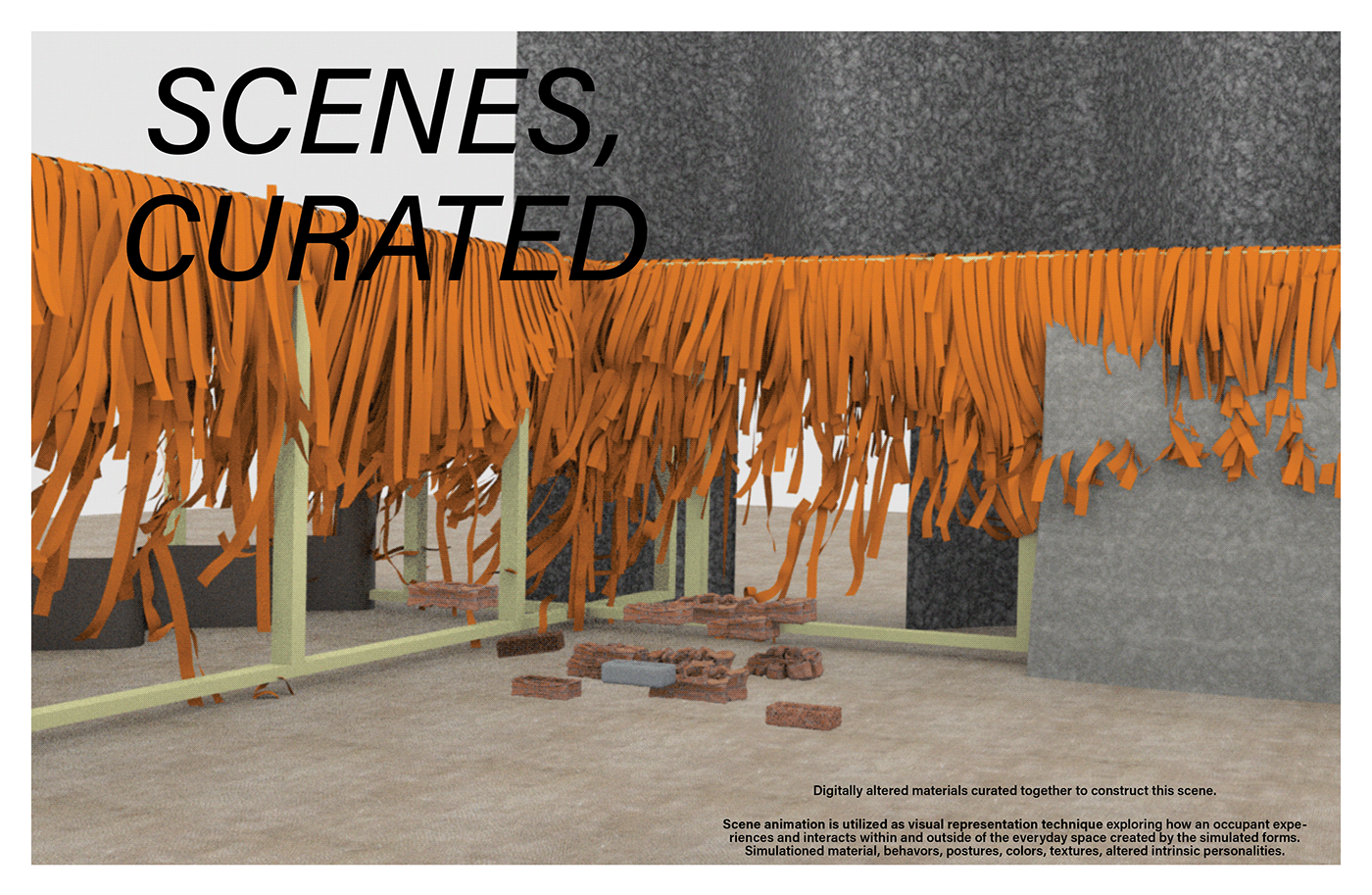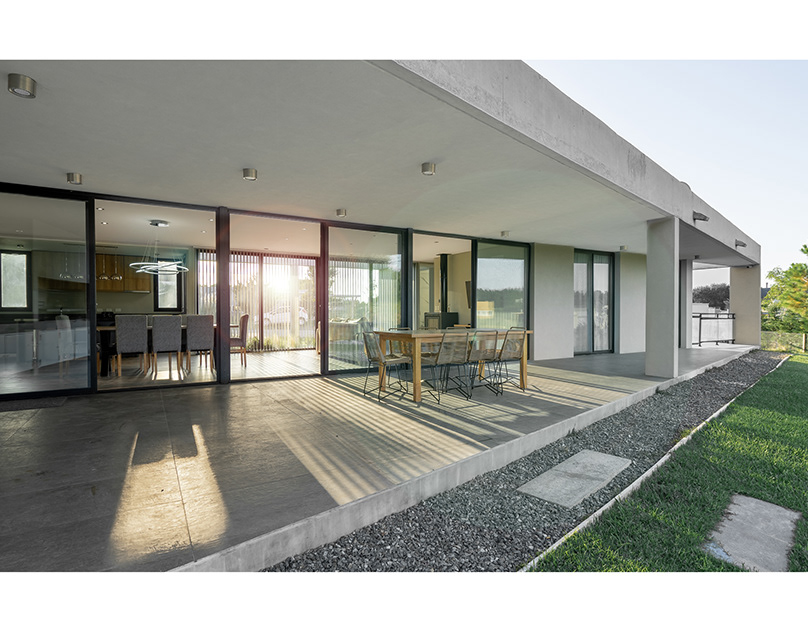SOFT SURREAL OF THE EVERYDAY
“Soft has attitude: soft materials misbehave, soft objects don’t get confined to any added on boundaries, soft by nature is nonstop growing, soft buildings can stand firmly, soft volume can contain, soft represents minority, soft stands up for social groups that doesn’t fit in to traditional norm, soft gives opportunities for surreal scenes, soft provides stages for body interactions, soft is resistant, soft introduces opportunity and inspiration, soft has potential to be the new everyday lifestyle.”
A Fantasy Story about Softness in Architecture.
Lana, Los Angeles, 06/20/2022


Research & Observations:
The one interest is to make architecture "soft", what are the past attempts? What are the “Soft” out there? Why are they “Soft”? What does “Soft” represent?(Analysis and Psycho-Socio Reasons)
What do they imply for new possibilities?
Theoretical Reference:




“Soft” historically and currently are used to represent female strength. (traditional fabric maker/weavers from Guatemala, T’nalak, Southern America, Mexican, etc.) (Anni Albers, textiles design at Bauhaus) (“Soft Schindler” curated by Mimi Zeiger)
Sociology, Queerness, Critical Theory


“Softness” as a physical quality from the paper towel analogue material were made into simulated paper, "Soft" can also represent fluidity, queerness, or social groups that don’t fit in traditional norm (David Eskenazi, Bathhouse)
Architectural References:



Soft, unexpected, unconventional forms achieved by a mix of glass and steel, spaceframe, Kenzo Tango Expo 70 Osaka. - “Soft Architecture” can be structural.


“Soft” symbolizes futuristic, progressive, and utopian. (Michael Webb &Archigram, Suitaloon and Cushicle)



“Soft” symbolizes futuristic, progressive, and utopian. (inflatable environments, Wolf Prix Bubble)




“Soft” symbolizes futuristic, progressive, and utopian. (R&Sie - Dusty Relief/BMu -furry building from dust)
Art And Sculptural References:



When plaster transcends its actual materiality, it becomes visually soft. Mono-material softness achieved from plaster, which dries and molds into hardened, solid form, the materiality is not what it intended anymore; (Rachael Whiteread, plaster, and steel frame, sculptural.) The “soft” of interest in this thesis is not about soft cotton, but it expands on soft being a multi-dimensional material effect, a material quality that transcends both digital and physical, and is in between the two worlds.


Genesis Belanger at Perrotin, curated sculptured daily objects. - “Soft” possibilities on daily objects. In project like this, where the representation of simulated scene of everyday objects, in my observation, has an ambiguity of hovering between itself being digital scene or actual scene. I was interested in assuming it as digital, the care in which things that are soft were made to look soft and has a soft posture.


Wang & Söderström’s work, creates interior and architectural digital works that “combines, collects and explores physical elements in a digital environment.” I am interested in the curated collection of formal strategies.
Technological References:




“Soft” to push to the extreme attention to enlarged materiality as well as joint/connection details. (Matthew Au, Mira Henry(Current Interest Studio), Rough Coat; Paul Preissner, Ring of Hope, Chicago)
From My Previous Grad School Journey:



“Soft” can be achieved by modular assembly, interest in development of the digitally woven material and how it enables knitting of facade. (soft forms made by weave, Lana Yuan, SCI-Arc 1GA Studio project, advisor: Matthew Au)



My second year project “the happy life of colume” advised by Russell Thomsen. Is inspired by analogue felt collage, then interpreted with digitally simulated drape cloth material. Eventually the “Soft” forms were achieved when pair with rigid space framing and etfe. How the seemingly “fabric like, permeable and light” materiality inspires unpredictable design opportunities for skin of architecture to have the quality of feeling soft or looking soft, how that strengthens softer forms to become architectural.
Methodology and Technical Investigation Journey
What techniques and methodology were applied to achieve these “Soft” in Architecture? How were they achieved?
How are we going to "soften" architecture? - This exploration starts with one curiosity:

What would happen if we apply digital simulation techniques to mundane everyday materials?



A few brainstorming sessions on some "soft possibilities" on normal construction site materials.
What new possibilities come out from the process if these digitally enabled materials were given opportunity to do unexpected things?




Lana Yuan, First look, Using wood, brick and concrete as example, imaging how digital simulation alters the intrinsic characteristic of common materials and how that imply new constructability and formal possibilities.
The altered materiality changes our expectations of the role of specific materials in architectural space and allows us to rethink conventions and occupy space in new ways. For instance, when rigid wood framing becomes supple, its structural role shifts from that which supports to something that requires support. The idea of framing becoming like a textile or curtain would lead to new approaches to subdividing spaces and rethinking interior/exterior qualities. In the case of the bond stacked bricks becoming inflated and puffy, the new puffy brick-like objects present novel ways of thinking about fenestration and enclosure.
Starting with wood, let's do a 4-steps experiment:
Four Experiments:
Experiment #01: Mundane, every-day, and commonly found construction materials were examined for their intrinsic qualities, characteristics of their origins, their stories, their modules, method of assembly, as well as their tectonic constructability and systematic application. New material possibilities were then proposed and digitally simulated to make the seemingly mundane materials behave in unexpected ways and perform with new characteristics. This implies a new possibility that is transferred into familiar everyday materials, altering their tectonic assembly system and constructability.

Experiment #02: Forms were digitally generated from these everyday materials found on the construction site and in the domestic household. Through the application of anti-physics simulation technologies, the methodology of “digital making” alters the intrinsic tectonic and material quality of the expected mundane, thus allowing everyday materials to misbehave. This allows new opportunities for conceptual form finding: Hard materials generate smooth forms with chamfered edges, light-weight materials construct volumes, supple materials assemble modular weaves, rigid becomes the new relaxed, firm objects post loose postures, the structural performs as the pliable. The new “digitally soft” materiality results in more formal possibilities for both the exterior and the interior, allowing occupants to occupy and interact with space in different ways.

Simulated wood becomes volumes with density, and now has a rubber bouncy property. Enhanced the construction of this scene.
Experiment #03: Take the simulated forms and interpret them interiorly as stages for a series of architectural scenes, constructed mono-materially. Be it based on a narrative of construction site and or a narrative of domestic lifestyle. Each scene is constructed with one specific altered material or one catalogue of materials as well as their simulated version studied in Experiment 00 and Experiment 01. The altered materiality changes our expectations of the role of specific materials in architectural space and allows us to rethink conventions and occupy space in new ways. Scenes are represented digitally with animations.

The scene built from the simulated wood.
Experiment #04: The scene-narrating process and the form-finding process then dialogue and negotiate with each other back and forth to perfect the architectural story. Through both the means of analogue model making and techniques of digital simulating. Finally, acknowledge a collection of rigorous yet tasteful architectural assemblages.

Testing render of the scenes and camera.
Concrete as sheet material is normally casted on site and tilt-up constructed. Similar sheet material is terrazzo for it also assembled in panels/sheets. What if we soften them digitally and turn the rigid material into a non-rigid drape? What opportunities come up for the new digitally made material? How can we apply it on in a digital scene in a domestic setting?


Opportunity 1: the panel drape like a curtain.

Opportunity 2: Light and thin fabric draping with elastic sewed-in patterns, enabled making of this scene with airy and fluffy simulated brick. Digitally inflated bricks now has new possibilities for flexible "digital soft": It is now a soft sheet materials that drapes over resulting in soft forms.

The Scene

The scene of terrazzo as a draped facade, rendered.
Brick as block material is normally bond stacked with a sequence of patterns, neatly, then seal with bond after stacking on site. What if we soften them digitally by changing the way it stacks into a more spontaneous assembly with more relaxed pattern? We can also invent more function such as storaging or shelving since the digitally simulated version of brick now has more irregular flared up and ribbing form which allow more design opportunities. How can we apply it on in a digital scene in a domestic setting?


The .3dm scene with brick spreading on a curved brick surface in the background facade, and stacked irregularly on the foreground as a versatile storaging-shelving unit.

The scene, rendered.

The digitally-altering process explores “soft” formal possibilities created by digital simulation techniques on familiar materials, draping, inflating, sewing, elastic, non-gravity floating...



In the spirit of the Eames:



Inspired by the idea of Charles & Ray Eames "total design" and “design as a lifestyle", this project express an artist's residence's lifestyle with a collection of curated design objects and the daily scenes, imaging a 2022, post covid new idea of the dreamed home, and the lifestyle that it implies.




Testing digitally simulated drape from on the metal structure on the Eames House, following its existing rhythm and partition frameworks.


Taking the existing framework as armature, and reorganizing the program chucks.
Testing out the simulated wood and glass and draping them from existing metal structure on the Eames House.

In this phrase the digital animation is a visual representation technique exploring how an occupant experiences and interacts within and outside of the everyday space created by the simulated forms.
Allowing us further dream about this flexible “digital soft” (soft form + soft material) with constructing scene animation.



My presentation will end with the exterior pan, thank you!
Link to Youtube










